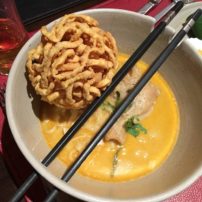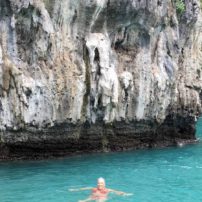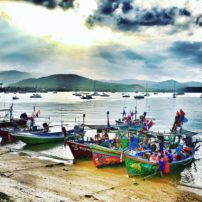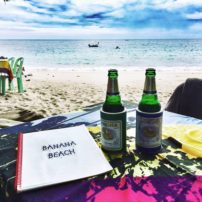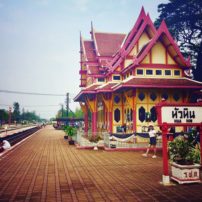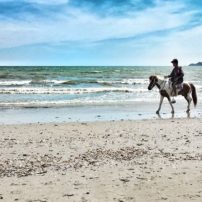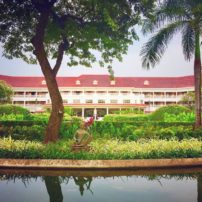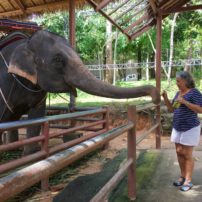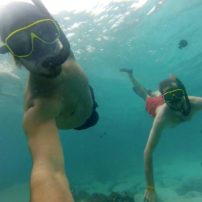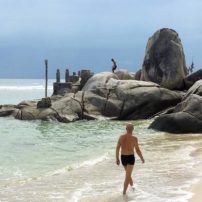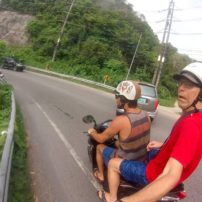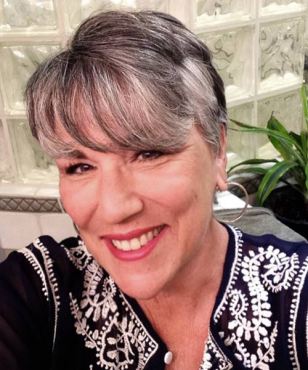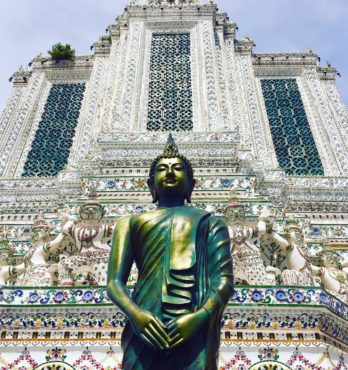
“Sawadee ka.”
That’s hello in Thai. Sawadee ka — said with hands in prayer position (known as wai) and a tiny bow with your head.
Hello from Thailand — a land of beauty and mystery. A place where royalty and religion are entwined deep in a culture of ritual and superstition. Many Americans know very little about Thailand. Our American image of this ancient culture often comes from the movie “The King and I.”
The movie was banned in Thailand because of its Hollywood misrepresentation of a complex and deeply religious king, who is depicted as ignorant and barbaric. In reality, King Rama V is credited for keeping his country from colonial expansionism of British and French empires through skilled diplomacy.
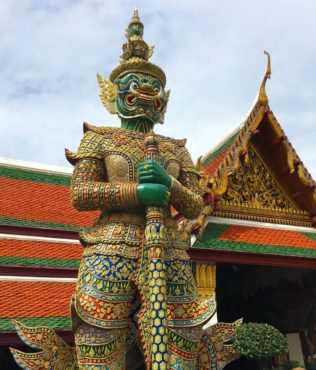
That’s not to say that plenty of “Western” countries, in particular the United States, did not have deep presence there for many generations. The history and current state of politics in Thailand is very complicated.
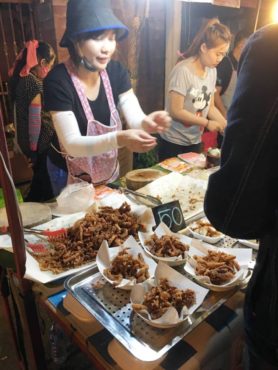
As a visitor, however, you don’t see most of that, and it’s easy to fall in love with Thailand. It’s no surprise, really. Thailand offers visitors so many wonderful things: amazing food, fresh fish and produce, sun and sand, friendly people, history and culture, islands and mountains and a relaxed and easy-going way of life.
Thailand struggles, however, with lack of recycling, excess plastic trash and lack of a cohesive spay-and-neuter program that results in literally thousands of stray dogs. Additionally, elephants are used for entertainment and not always in a humane way, while prostitution and sex tourism are booming. None of this can be kept from the eyes of visitors. It is real and everywhere.
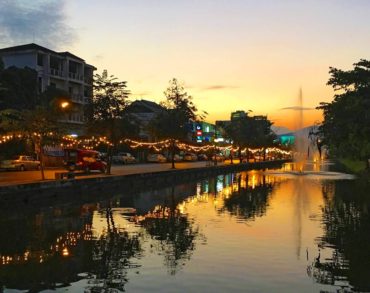
Our grand adventure blessed us with eight weeks in Thailand; enough time to see many things, while still relaxing and enjoying a laid-back Thai lifestyle. Of course, we didn’t see everything — Thailand is, after all, bigger than California, with about as much variety. Mountains, islands, shoreline and major cities as well as quiet, secluded beaches and wild nightlife centers — there is something for everyone.
First Stop: Bangkok
Our Thai escapade began in the country’s largest city, Bangkok. Big and crazy is how it could be described. Cars, scooters, tuk-tuks, food vendors, ferries, water taxis and the ever-present smell of sewage in the still-hot air felt cloying. Hundreds of knock-off designer handbags, sunglasses and jewelry mixed up with noodle houses and street food, next to massage joints and young girls propositioning on the street.
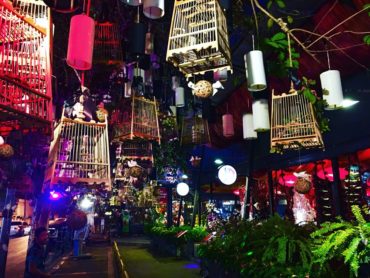
Despite all that, a visit to Thailand would not be complete without some time to explore Bangkok. Guidebooks galore will give you a list of things to do. My favorite activity was the water taxi or long-tailed boat ride on the Chao Praya River — the lifeblood of this ancient city.
Current events: The Grand Palace and grounds is where until October 2017 King Bhumibol Adulyadej lays in state after his passing last October. King Bhumibol Adulyadej was the longest-reigning monarch in Thai history, 70 years.
Nearly half of Thailand’s 67 million people will pass by his body during the 12 months of mourning for this beloved leader. Seeing the throngs of silent, black-clad mourners waiting in line for as long as 12 hours to pay their respect was sobering.
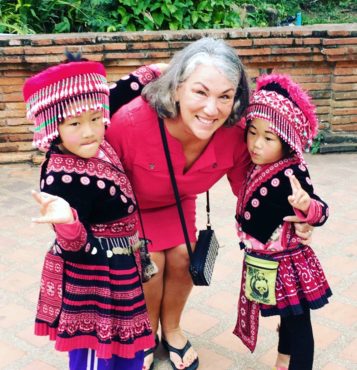
Chiang Mai
Mountains and forests surround the beautiful and interesting city of Chiang Mai in Northwest Thailand. Home to 250,000 people, Chiang Mai is an ancient city of the Lanna Kingdom, of the Northern Thai region. The old town is surrounded by a huge moat (a square nearly a mile on each side), and remnants of the original wall that once circled the city remain in bits and pieces. The climate is cooler than Bangkok, as it is at an elevation of 310 meters.
The food in Chiang Mai is cheap and delicious. You can graze through the famous Chiang Mai night markets every night for dinner and only spend a few dollars. Guidebooks will lead you to dozens of stunning and ancient wats (temples), as Chiang Mai is known for its exquisitely beautiful temples. Visitors come from all over the world to worship here.
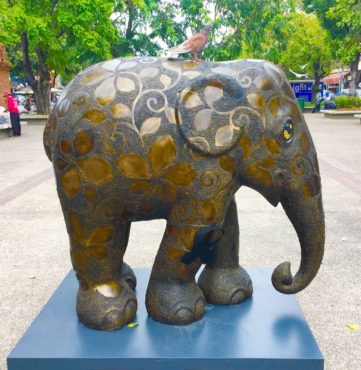
Cuisine extraordinaire: Local specialty noodle dish called Khao Soi Noodles will have you coming back for more. Found only in this region, this delicious noodle dish has a rich coconut broth with chicken and crunchy noodles on top. Learn to cook this specialty item and other Thai dishes at one of the many cooking schools in Chiang Mai.
Phuket and Laguna Phuket
Phuket is the largest island in Thailand in the southwest region just north of the equator at 8 degrees. Phuket is famous for its western beaches on the Andaman Sea — a very busy tourist destination, with literally hundreds of hotels and resorts. Most visitors stay near the popular beaches of Patong, Karon, Kata and Nai Ham. These areas cater to tourists who like nightlife and bars, as well as restaurants and shopping.
It’s hard to find any remnants of the devastating 2004 tsunami that killed 5,400 people in Thailand and 250 in Phuket. Hotels and beaches and restaurants are thriving.
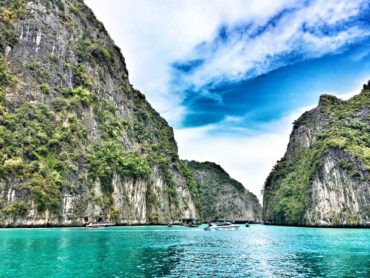
For something a bit quieter, stay in the northwest beach area of Laguna Phuket. This quieter resort area offers easy beach access and a handful of restaurants and shops within walking distance.
Secret find: While most tourists are on a crowded snorkel tour boat to overpopulated and overrated Koh Phi Phi Lei, secluded Banana Beach is just north of Laguna Phuket. Here, you will find Andy cooking the catch of the day and serving ice-cold beer from a hut on the beach.
Koh Samui and Chaweng
Koh Samui, Thailand’s second-largest island, is located in the Sea of Thailand and is a mountainous island with a very jungle-like climate and gorgeous beaches. On Koh Samui, you really need to have wheels — either a car or moto to get around. Public transportation is nonexistent and taxis are hard to find.
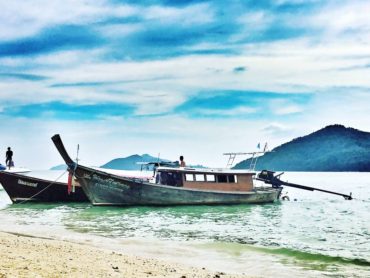
Koh Samui is Thailand’s coconut capital, exporting 2 million coconuts each month, primarily for coconut oil. You will see evidence of this cottage industry in the mountains of discarded coconut shells and trucks piled high with coconuts and one lone monkey on top. Monkeys are trained to pick and protect the crop.
Chaweng is the island’s largest city, with beautiful resorts and beachfront restaurants but lots of tourists. For a quieter area, Lamai or Natong have the same lodging options with beaches where you can stretch out a bit more.
Tip: The abandoned Laem Set Inn lies in ruins on the beach just west of Laem Set. It’s a great sunbathing place where you will likely have the beach all to yourself.
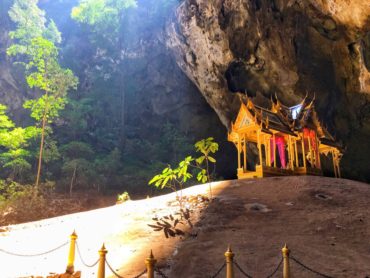
Final Stop: Hua Hin
To finish our time in Thailand, we spent three weeks in the beachside town of Hua Hin, located southwest of Bangkok on the Sea of Thailand. This is the original Thailand resort area, developed in the 1920s for the Thai elite and royal family (who still have a palace here).
Once a tiny colonial town, Hua Hin is a thriving city with lots of tourists during peak season and ex-pats year-round. The original Hua Hin Resort (now the Centara Hotel) is still standing and offers guests and visitors alike a peek at colonial Thailand right down to high tea.
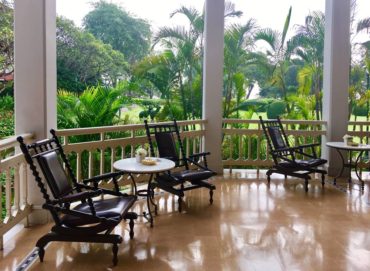
Sneak away: While most visitors to Hua Hin are only interested in the beach and water activities, don’t miss the astonishingly beautiful Phraya Nakhon Cave, well worth the effort to get there. An hourlong drive and another hourlong hike (up the side of a mountain) will deposit you in a stunning cave, home to a small and ornate shrine. Plan your visit early, so the sun is still peeking down through the hole in the roof of the cave. You won’t be disappointed.
Whether you visit Thailand for a week or for two months, you will take away a feeling of warmth and friendliness — genuinely presented by the Thai people. No matter where we traveled in this diverse country, we found welcoming and gracious hosts who are proud of their culture and want to share it with the world.
Khob khun ka. Thank you.





